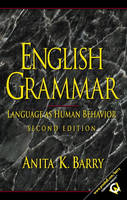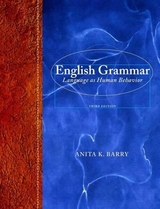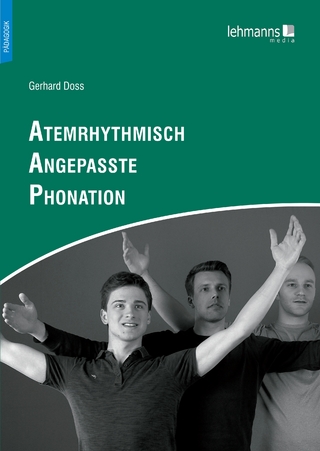
English Grammar
Pearson (Verlag)
978-0-13-032260-9 (ISBN)
- Titel erscheint in neuer Auflage
- Artikel merken
Approaching grammar as a process and not a product, this text engages students in a conversation about English that will help them reflect on how their language works and understand the social judgments that accompany language use—making them feel they are active participants in shaping their language rather than passive victims of grammar rules that someone imposes on them. Employing the terminology of traditional grammar combined with the insights gained by modern linguistic analysis, it describes English as an instrument of communication, and lays the necessary groundwork for thinking about language so that students can extend what they learn to new situations and apply their knowledge of language in ways most useful to them. Three different types of exercises support the learning and review processes and motivate students to think, talk, and write about English with increasing confidence and sophistication as the term progresses.
1. Why Study English Grammar?
Native Speakers and Grammar Study. Standard English. Judgments about English. The Legacy of the Eighteenth Century. Reflections.
2. How Do We Study English Grammar?
Why Do People Disagree about Grammar? What Are the Common Elements of English? Reflections.
3. Nouns and Noun Phrases.
What Are Nouns? What Are Some Common Subcategories of Nouns? What Makes Up a Noun Phrase? Determiners. What Are the Functions of Noun Phrases? Verbal Nouns and Noun Phrases. Compounds. Reflections. Practice Exercises.
4. Verbs and Verb Phrases.
What Are Verbs? What about the Exceptions? What Are Some Common Subcategories of Verbs? What Is Verb Tense? What Makes Up a Verb Phrase? What Are Nonfinite Verb Phrases? Compounds. What Is Subject-Verb Agreement? Reflections. Practice Exercises.
5. Pronouns.
What Are Pronouns? Personal Pronouns. Reflexive Pronouns. Reciprocal Pronouns. Demonstrative Pronouns. Relative Pronouns. Interrogative Pronouns. Universal and Indefinite Pronouns. Reflections. Practice Exercises.
6. Adjectives and Adverbs.
What Are Adjectives? How Do Adjectives Modify Nouns? What Are Adjective Phrases? What Are Adverbs? Is All Well and Good? What Are Adverb Phrases? Reflections. Practice Exercises.
7. Prepositions and Particles.
What Are Prepositions? What Are Prepositional Phrases? What Are Particles? Reflections. Practice Exercises.
8. Clause Type: Voice.
What Is Grammatical Voice? How Is the Passive Voice Formed? How Are Grammatical Relations Determined in the Passive Voice? Why Do We Need the Passive Voice? What Is a Truncated Passive? Reflections. Practice Exercises.
9. Clause Type: Discourse Function.
What Is Discourse Function? Declaratives. Interrogatives. Imperatives. Exclamatives. Crossover Functions of Clause Types. Reflections. Practice Exercises.
10. Clause Type: Affirmative vs. Negative.
What Is Negativity in Grammar? Verb Negation. Negation of Indefinites. Noun Negation. Adjective and Adverb Negation. Negation of Compounds. Partial Negation. Reflections. Practice Exercises.
11. Combining Clauses into Sentences: Coordination.
How Is a Sentence Different from a Clause? Sentence Building Through Coordination. Clause Coordination and Ellipsis. Reflections. Practice Exercises.
12. Combining Clauses into Sentences: Subordination.
Sentence Building Through Subordination. Adverbial Clauses. Noun Clauses. Relative Clauses. Restrictive and Nonrestrictive Relative Clauses. Reduced Relative Clauses. Reflections. Practice Exercises.
13. Why Study English Grammar? (Once More!)
Answers to Practice Exercises.
Glossary.
Index.
| Erscheint lt. Verlag | 25.2.2002 |
|---|---|
| Sprache | englisch |
| Maße | 250 x 150 mm |
| Gewicht | 490 g |
| Themenwelt | Schulbuch / Wörterbuch ► Wörterbuch / Fremdsprachen |
| Geisteswissenschaften ► Sprach- / Literaturwissenschaft ► Sprachwissenschaft | |
| Sozialwissenschaften ► Pädagogik | |
| ISBN-10 | 0-13-032260-1 / 0130322601 |
| ISBN-13 | 978-0-13-032260-9 / 9780130322609 |
| Zustand | Neuware |
| Haben Sie eine Frage zum Produkt? |
aus dem Bereich



